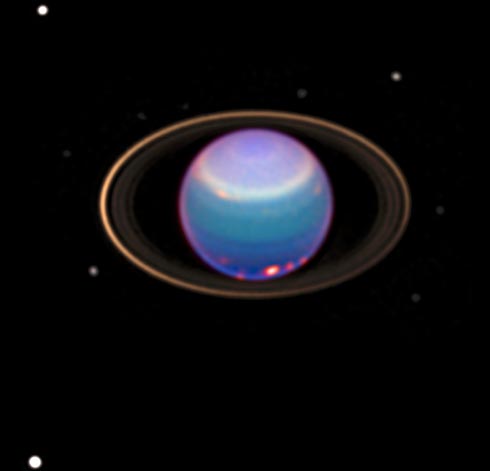Infrared Uranus

Explanation:
The
Sun's third largest planet usually looks quite dull.
Uranus typically appears as a featureless small spot
in a small telescope or a
featureless large orb in a large telescope.
Last August, however, the
Hubble Space Telescope was able to
photograph Uranus in
infrared light, where the distant planet
better shows its unusual
clouds, rings, and moons.
Recent analysis indicates that clouds
seen here in orange appear to circle
Uranus
at speeds in excess of 500 kilometers per hour.
Comparisons to
earlier photographs
show a slight precession shift in the brightest of
Uranus' rings.
Several of Uranus' numerous small
moons are visible.
Authors & editors:
Robert Nemiroff
(MTU) &
Jerry Bonnell
(USRA)
NASA Web Site Statements, Warnings,
and Disclaimers
NASA Official: Jay Norris.
Specific
rights apply.
A service of:
LHEA at
NASA /
GSFC
& Michigan Tech. U.

